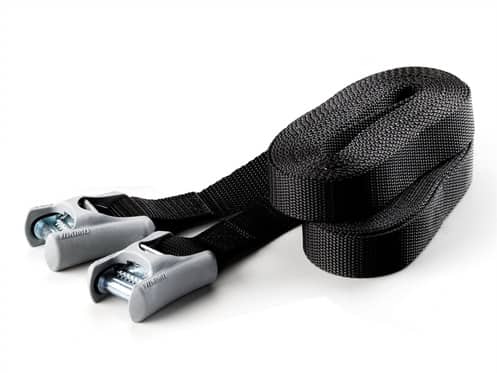How to mount a surfboard
There’s nothing like the feeling of grabbing your wetsuit, the cooler bag, and your surfboard and heading to the coast. But if you are a first-time surfer, you might need a little help figuring out how to mount such a large item on to the top of your vehicle. This is an important step in enjoying your day at the beach because improper mounting can result in injury to you, those around you, or to other vehicles on the road. Here’s a step-by-step guide about how to mount a surfboard onto your vehicle so you can get to the fun faster.
For this step-by-step guide, we’re assuming you already have a roof rack or roof bars installed on your vehicle. If you do not have roof racks or bars installed on your car, take a look at our roof racks from Whispbar.
STEP ONE: GET YOURSELF SOME STRAPS
While you might have roof racks or bars, you’re still going to need something to actually hold down your surfboard to the rails themselves. This means getting yourself a sturdy pair of straps made from strong materials. You can use straps to mount the large item across your roof bars; or, you can use a board bag if you are securing your surfboard to the roof of your vehicle. Experts will tell you that using a board bag and straps is the best way to transport your surfboard, especially on long road trips. Make sure the straps are long enough to reach across the width of the surfboard

STEP TWO: LIFT THE LARGE ITEM TO THE TOP OF YOUR VEHICLE
If you are surfing, keep in mind that the wind means good surf, but it also means that your board could get taken in the wind. When you place the board on the top of the vehicle, make sure you are careful not to let it get caught in the wind. Laying boards and boats flat is easiest, but the position you place them in might depend on the type of roof rack or bars system you have. Some are vertical, and some are horizontal. There are also a number of legal regulations to follow including the proper storage of your large item on the top of your vehicle. If the item could project from your vehicle and cause harm, you need to remove it.
STEP THREE: STRAP IT DOWN.
It’s important to ensure the surfboard is properly positioned in the centre of your roof rack or rails, and that it is properly balanced so that it reduces the risk of coming off the vehicle while in motion. It’s best to use self-tightening straps so that you don’t have to exert too much energy in trying to secure the large item to the top of your vehicle. It’s awkward enough trying to reach the top of your vehicle, so use your straps on the side closest to you and make them as tight as you can. Further, you must strap down the the nose and tail of your board to the front and back of your vehicle - if you don’t, you may incur a fine. For this, we have a product which works a treat, aptly named SUP Brah. This product enables you to carry your boards, especially your longboards, to the beach safely.

STEP FOUR: PAY ATTENTION
During transport, it is easy to forget that there is a wide load sitting on top of your vehicle. While making turns or sudden stops be sure to check to make sure the load has not shifted. You might need to pull over to the side of the highway once or twice to confirm your straps are tight enough, and when you make rest stops, always check the tightness and security of the straps.
Whether you are looking to spend a day on a calm lake with friends in a canoe or you want to tear up the surf on a wild beach somewhere in Australia, always take the time to ensure your large items are properly secured. Everyone will have a much better time if you do!
Last updated: november 23, 2017